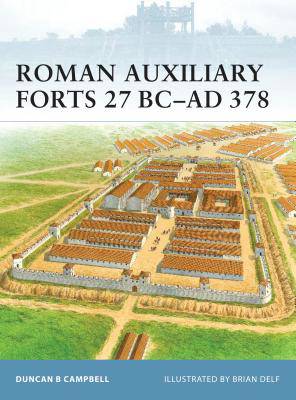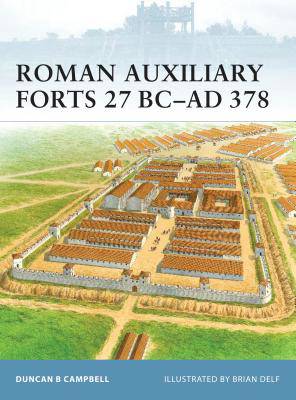
- Afhalen na 1 uur in een winkel met voorraad
- Gratis thuislevering in België vanaf € 30
- Ruim aanbod met 7 miljoen producten
- Afhalen na 1 uur in een winkel met voorraad
- Gratis thuislevering in België vanaf € 30
- Ruim aanbod met 7 miljoen producten
Zoeken
€ 20,95
+ 41 punten
Omschrijving
With the vast expansion of the Roman Empire came a need for more and more fortifications to defend it. The borders of the Empire stretched through wildly different terrains which demanded a huge variety of different fortifications, depending on the local conditions and the threats faced by the different areas. The adoption of local troops (auxiliaries) and local building techniques at key strategic points on the outskirts of the empire led to an intriguing mix of strong Roman structure with unique culturally diverse elements. Describing the development of these hugely varied defensive systems, Duncan Campbell delves into the operation and social history behind the fortifications. With detailed color artwork and maps, he traces their history through the Batavian Revolt of the 1st century AD, which saw auxiliary units scattered far from their native regions, until the decline of the late-3rd and 4th centuries placed their fortifications in an increasingly pressurized and eventually untenable position.
Specificaties
Betrokkenen
- Auteur(s):
- Illustrator(s):
- Uitgeverij:
Inhoud
- Aantal bladzijden:
- 64
- Taal:
- Engels
- Reeks:
- Reeksnummer:
- nr. 83
Eigenschappen
- Productcode (EAN):
- 9781846033803
- Verschijningsdatum:
- 19/05/2009
- Uitvoering:
- Paperback
- Formaat:
- Trade paperback (VS)
- Afmetingen:
- 178 mm x 247 mm
- Gewicht:
- 176 g

Alleen bij Standaard Boekhandel
+ 41 punten op je klantenkaart van Standaard Boekhandel
Beoordelingen
We publiceren alleen reviews die voldoen aan de voorwaarden voor reviews. Bekijk onze voorwaarden voor reviews.











